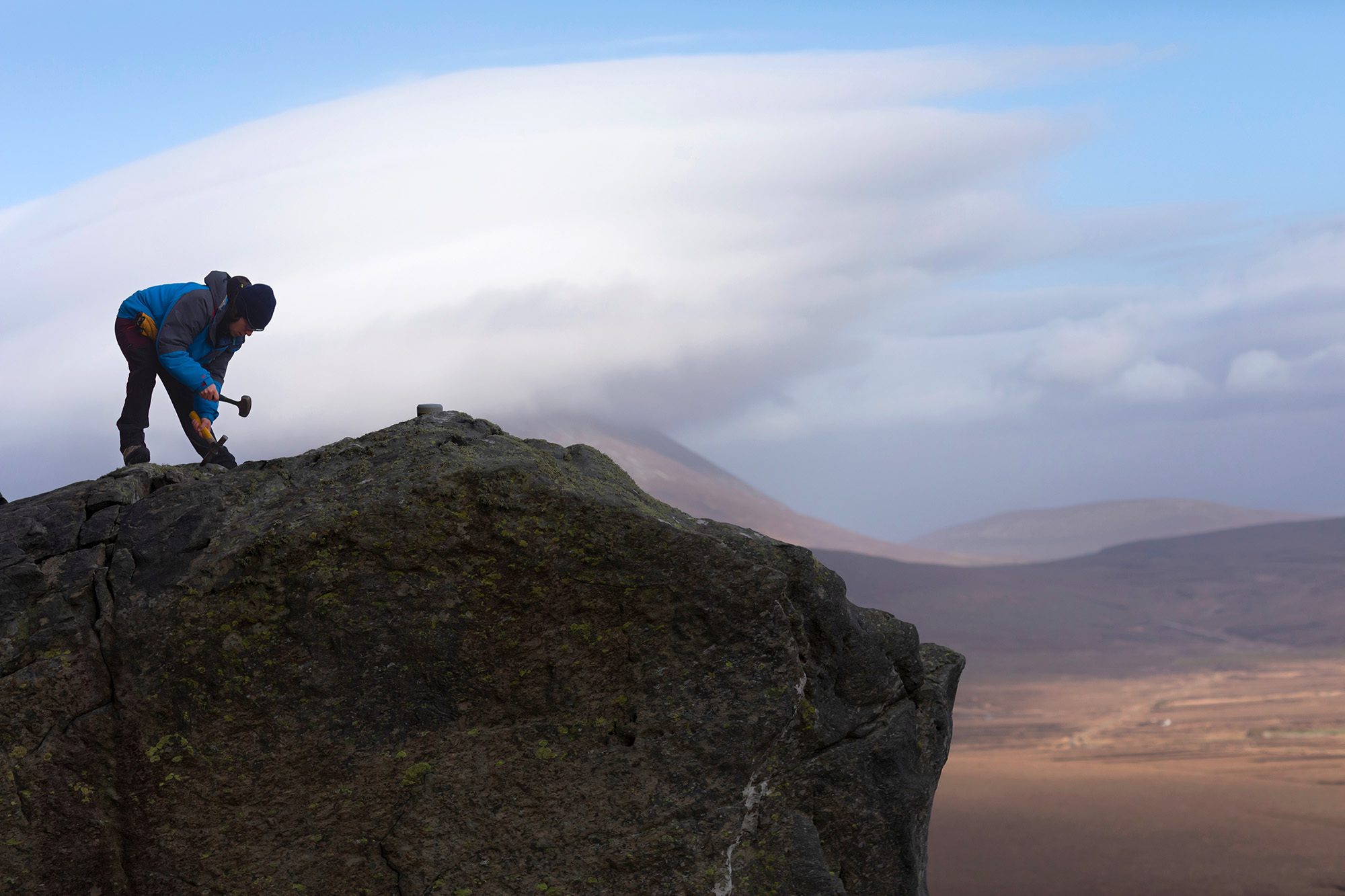The muddy evidence for climate change is so tangible you can literally touch it.
We live on a windy island in the North Atlantic Ocean, warmed in the winter by those subtropical currents weaving up from the south and lashed year-round by rain-filled storms rolling in off the sea. The summertime here is never too hot, the winter rarely below freezing, and a drought is declared after a mere two weeks without rain. In short, Ireland’s climate is the opposite of extreme, and that makes life here predictable and comfortable for those species making it there home. Yet, a quick dig into the ground beneath your feet will reveal that this has not always been the case, and that in geologically recent times – while anatomically modern humans (just like us) traversed Europe and navigated its waterways – Ireland’s otherwise mild climate was rocked by profound disturbances that left a very different landscape in their wake.
Here at the University of Galway, our team (PhD students Paulo Rodriguez and Anouck Roignot, and Comer Fellow Dr. Gordon Bromley) is exploring the physical impact of abrupt climate change on this part of the world and trying to understand how these tumultuous events are linked to global warming.

Our field site on Achill Island, off the west coast of Ireland, Spring 2024.
During spring 2024, we visited our field site on Achill Island, off the west coast of Ireland, where mounds of rubble and boulders called moraines mark the growth and decay of ice age glaciers. The ice itself may be long gone, but by carefully mapping these moraines, we are reconstructing times during which climate cooled and the glaciers grew, and the opposite, when climate warming caused Ireland’s glaciers to shrink and disappear. We can even use the distribution of these moraines to calculate where the freezing level used to be on Achill Island.

Searching for any little geologic clues.
What does this science look like on the ground? Surprisingly low-tech. It involves hours of roaming about the Irish hills in sun, wind, and rain, searching for any little geologic clues as to where the glaciers used to be and how they changed in size over time. This is very much like Hercule Poirot entering the crime scene in an climatic Agatha Christie mystery.

Anouck and Paulo are using a cutting-edge technique called cosmogenic beryllium-10 surface-exposure dating.
For a geologic record like this to really help us understand how abrupt climate change works, we need to know when these past warming and cooling periods actually happened. To build the chronology for the Achill Island glacial record, Anouck and Paulo are using a cutting-edge technique called cosmogenic beryllium-10 surface-exposure dating, which tells them when the boulders on these moraines were dumped by the glacier that originally carved the rock out of the mountain and dragged it downhill.

Anouck uses a chisel and hammer to remove a small sample of the boulder surface.
Beryllium-10 dating is like geologic wizardry and relies on the exposure of rock surfaces to radiation. In a way, these boulders are like giant stopwatches lying around on the landscape, stopwatches that have been ticking since the glacier deposited them. Anouck uses a chisel and hammer to remove a small sample of the boulder surface; she will take these rock fragments back to the lab in Galway, whereupon she will use chemistry to ‘read the stopwatch’ and establish when climate warming caused the Achill glacier to abandon these moraine ridges and melt away.
These sediments have not seen the light of day for thousands of years!—Gordon Bromley

Sediment cores are like muddy time machines, containing little pieces of evidence (plant fragments, insect remains, pollen, DNA, etc.) for every environmental change that has happened here over the millennia, and these sediments have not seen the light of day for thousands of years!
The answer is in here somewhere.
After the last glaciers melted away, approximately 17,000 years ago, the Irish landscape was a barren expanse of windswept rock and gravel, riddled with lakes and colonised by only the hardiest little mosses and shrubs, like the Arctic tundra today. How do we know this? Thanks to sediment cores like this one, taken from a lake just north of Galway City, where metre upon metre of lake-floor sediment has accumulated continuously since the glaciers vanished. Such cores are like muddy time machines, containing little pieces of evidence (plant fragments, insect remains, pollen, DNA, etc.) for every environmental change that has happened here over the millennia, and these sediments have not seen the light of day for thousands of years! Most striking of all is how the blue-grey clays in the bottom metre, which indicate permafrost, give way to brown, organic-rich sediments bursting with life within a few millimetres – or, geologically, the blink of an eye.
This muddy evidence for climate change is so tangible you can literally touch it, yet the questions remain: How did climate in the North Atlantic change so quickly, and why? The answer is in here somewhere.
This project was funded by Science Foundation Ireland and Geological Survey Ireland.



